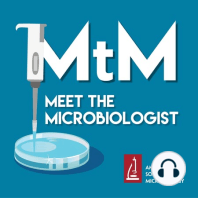24 min listen

091: SARS and MERS coronaviruses with Stanley Perlman
091: SARS and MERS coronaviruses with Stanley Perlman
ratings:
Length:
58 minutes
Released:
Sep 20, 2018
Format:
Podcast episode
Description
How do researchers study a new pathogen? Stanley Perlman talks about how virus researchers studied SARS and MERS after they emerged, what they learned, and why there are no more cases of SARS. He also discusses his work on a coronavirus model of multiple sclerosis. We want to hear from you! Please take our listener survey. Julie’s Biggest Takeaways: Coronaviruses have the largest RNA genomes, with up to 40 kB of sequence, but why their genomes is so big is unclear - their genomes don’t seem to code for more genes than viruses with smaller genomes. Before the SARS coronavirus outbreak in 2002, few severe human infectious coronaviruses were known, but the several coronaviruses had been identified that cause serious disease in animals such as pigs, cats, and cows. Where did SARS go? SARS coronavirus had to cross into people and mutate for better infectivity, and when infecting people, it caused a lower respiratory disease. Quarantining SARS patients is extremely effective because the symptoms coincide with infectivity, and spread of SARS was quenched by strict use of quarantine. Quarantine is less effective for diseases like influenza or measles, because patients are contagious before showing symptoms. Because of its low person-to-person transmission, there’s very small possibility of major outbreaks from large gatherings such as the Hajj. MERS acts more like an opportunistic infection, and its transmission among people has been mostly among immunocompromised or otherwise sick people in the hospital. By the time patients present with multiple sclerosis, it may be 20 years after an inciting event that triggers the disease. By using a murine coronavirus inciting event for neuron demyelinization in mice, the role of the immune system in this process can be interrogated. Scientists may not understand the exact cause of MS in people, but this model helps them to understand how different immune cells contribute to disease.
Released:
Sep 20, 2018
Format:
Podcast episode
Titles in the series (100)
MTS3 Ute Hentschel - Symbiotic Sea Sponges: Ute Hentshel is a professor of chemical ecology at the University of Würzburg in Germany. Her research focuses on characterizing the microbial communities associated with marine sponges, the diversity of these symbionts and their activities. On this epis by Meet the Microbiologist